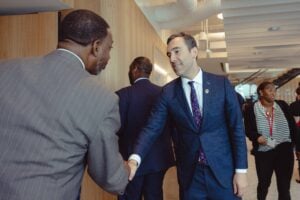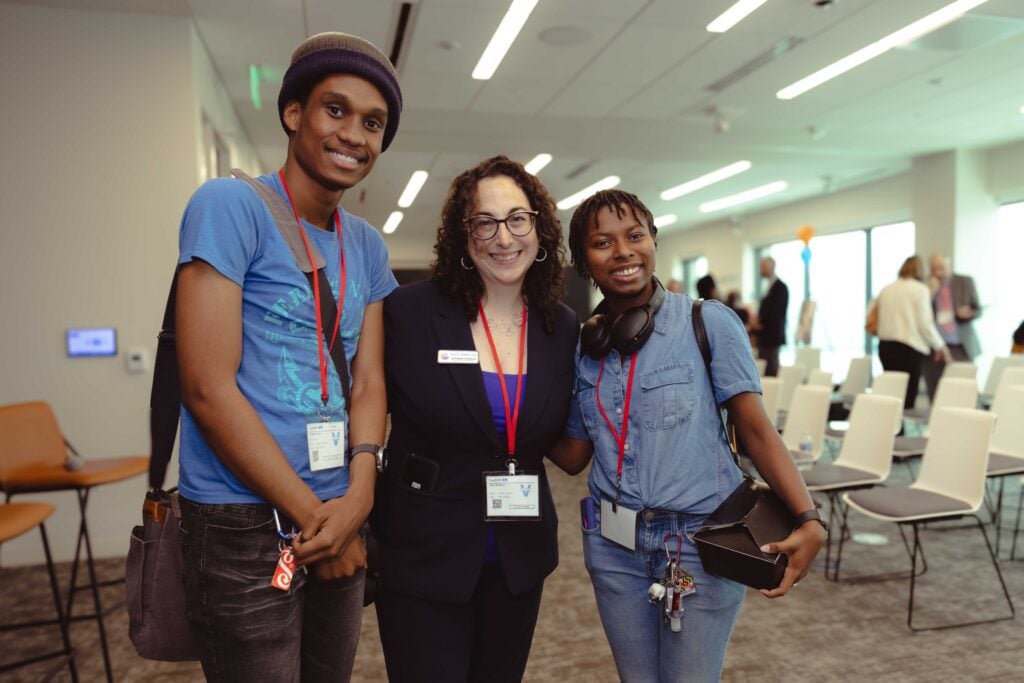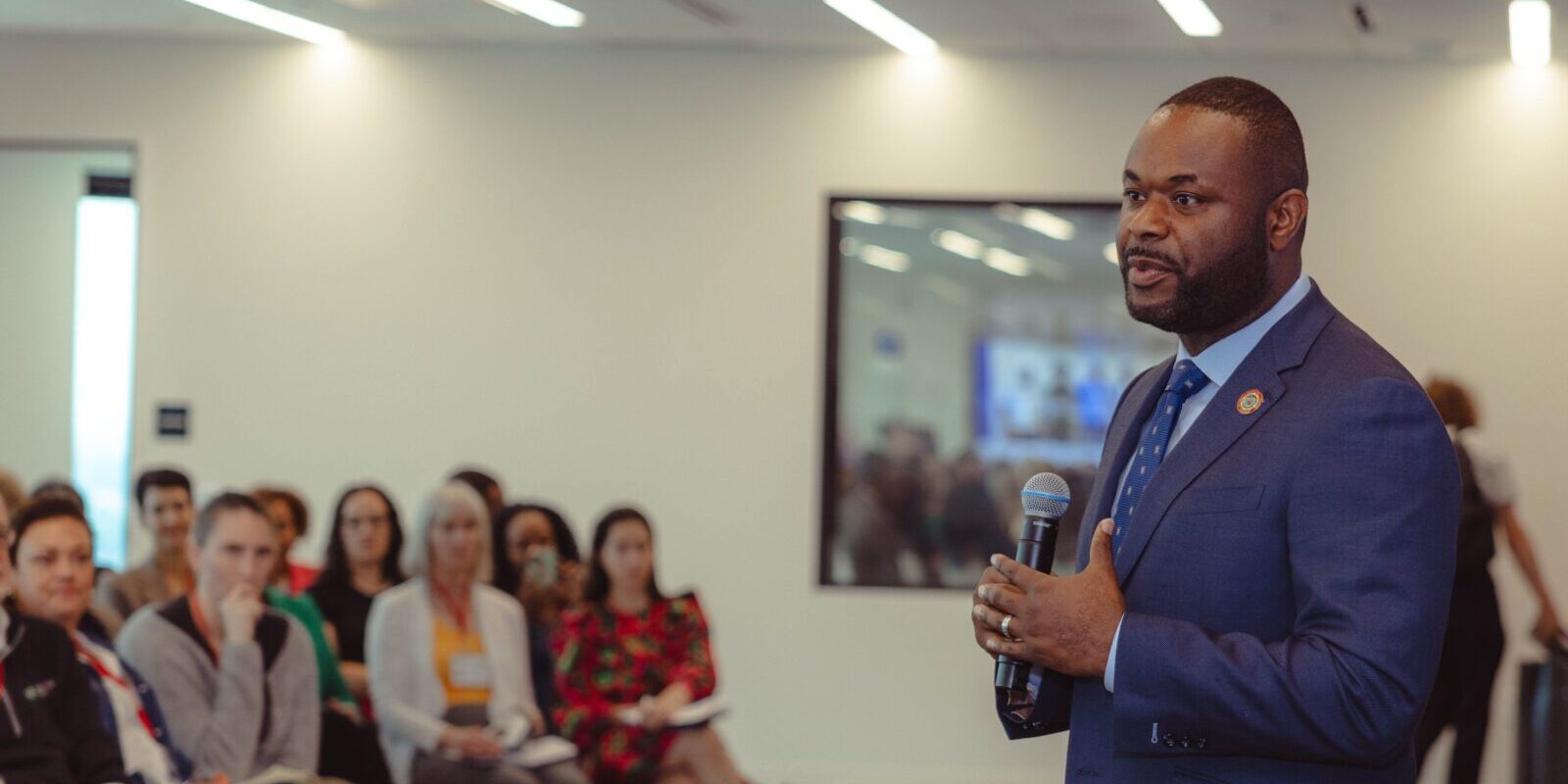Across the country, communities in the StriveTogether Cradle to Career Network are working to put more young people on a path to economic mobility. StriveTogether’s seven cradle-to-career outcome areas are critical milestones that shape a child’s educational journey and future success. Each post in this series takes a closer look at one of these key outcomes, highlighting the challenges, opportunities and strategies that drive progress.
Employment is the final milestone in the cradle-to-career continuum and one of the most direct steps to economic mobility. It is tied to a wide range of outcomes, from financial stability to physical health, mental well-being and social connectedness. Research shows that higher income is associated with longer life expectancy and better overall health. But persistent disparities by race, income and education continue to shape who has access to stable, living-wage employment.
In Baltimore, a bold vision is shaping the future: by 2030, 80% of young adults will achieve economic self-sufficiency. For Baltimore’s Promise, a member of the StriveTogether Cradle to Career Network, this goal represents a deep commitment to system alignment, community voice and expanded opportunity. By focusing collectively on workforce outcomes, the partnership is helping more young people take meaningful steps toward long-term success.
Listening to Data and Community
Baltimore’s Promise grounds its work in both data and lived experience, recognizing that numbers alone don’t tell the full story. The Baltimore City Youth Data Scorecard revealed persistent disparities—significant wage gaps, high rates of youth unemployment and structural barriers that especially affect Black and Latine youth.
To deepen understanding, Baltimore’s Promise turned to youth and families. Through focus groups, interviews and surveys, young people shared their experiences navigating education, training and employment systems. They spoke about the difficulty of finding that first job, the challenge of balancing school and caregiving and the feeling of being shut out of opportunities. This commitment to listening and acting laid the foundation for what would become one of Baltimore’s most effective strategies for youth employment: Grads2Careers (G2C).

Launched in 2018 in response to community feedback, G2C connects recent high school graduates to occupational skills training, case management and wraparound services, along with job placement and retention supports. What began as a demonstration project is now a leading model forexpanding access to employment in high-wage, high-demand industries. Since its launch, 1,253 young people have enrolled. Of those, 879 have completed training, nearly 600 have been placed in jobs and 620 are now either employed or enrolled in college. Since January 2024, graduates from the most recent cohort earned an average of $17.12 per hour, that is about a 14% increase over Maryland’s current minimum wage of $15.00.
The program’s success is a result of effective implementation, strong collaboration and smart use of data to guide decisions. Partnerships with training providers, city schools and public agencies have enabled a coordinated citywide approach to supporting young adults after high school. Data collected through G2C has guided the program’s growth and informed Baltimore’s broader workforce vision.
Scaling What Works
Baltimore deepened its commitment by using CareerBound to extend workforce support earlier in students’ lives. Aligned with city and school system priorities, the program is poised to reach 8,300 students by 2030, expanding access to career-connected learning and early work experience.
This momentum is part of a larger commitment to reduce youth disconnection. In 2009, 27% of Baltimore graduates were disconnected from postsecondary education and the workforce. By 2019, that number had dropped to 15%, before rising to 21% in the first year of the pandemic. With continued investment in initiatives like CareerBound, Baltimore is working to regain that progress and strengthen pathways that help young people stay engaged and on track for long-term success.
At the same time, Baltimore is addressing barriers to access through community-forward grantmaking. Youth-led efforts have helped fund 18 workforce development programs over three years, reaching nearly 700 students with career exposure, mentorship and mental health supports. These investments have created safe, supportive spaces for young people to lead, earn and explore their interests while gaining critical skills for their futures.
To further strengthen year-round support, the Baltimore Summer Funding Collaborative (SFC) brings a collective, community-driven approach to resourcing youth programming. Its unique grant review process centers youth and family voice in funding decisions, ensuring that investments reflect community priorities. In summer 2025, the SFC funded 75 programs based on these recommendations, serving more than 4,500 students — over a quarter of them focused specifically on workforce development. 
Centering Youth Leadership
Leadership in Baltimore includes young people at every step, from vision to action. Through initiatives like CareerBound, Youth Grantmakers and the Youth Leadership Internship Program, young people help review proposals, shape programming and represent their peers in decision-making spaces. Their leadership is visible, valued and compensated.
Youth are also active partners in shaping strategy. Baltimore’s Promise ensures that supports reflect young people’s needs by working alongside them and embedding youth voice across the organization. Launched in March 2024, the 10-member Community Advisory Board provides oversight and keeps the work transparent and accountable. Half of the board seats are reserved for youth age 24 and younger, underscoring the organization’s commitment to shared decision-making. Members collaborate with the Board of Directors to guide priorities, strengthen neighborhood connections and advocate for meaningful change. With a focus on community engagement and racial equity, the Community Advisory Board meets regularly and participates in joint sessions with organizational leadership. Its co-chairs also serve on the Board of Directors, ensuring alignment across all levels of the work.
This collaboration extends beyond program design into how the city partners with employers. Baltimore’s Promise is currently focused on strengthening employer engagement, developing clear tools that show how local businesses can participate and hosting sessions to bring more partners into the fold. These efforts are essential to connect youth with real economic opportunity, especially as the city prepares for transformational growth.
Employers are stepping up to be part of that solution. Tanya Terrell, director of corporate community impact at Baltimore Gas and Electric (BGE), reflected on the importance of investing in young people and working in partnership: “At BGE, we know that our future workforce — and our region’s success — depends on how well we prepare young people today. That’s why we’re proud to support CareerBound and to serve on the board of Baltimore’s Promise. As an employer, we see the power of collective action in building equitable pathways into high-demand careers. By aligning with partners across education, workforce, and community, we’re not just investing in talent — we’re investing in Baltimore’s long-term strength and resilience.”
The population in Baltimore is growing and the city is seeing major infrastructure investments — from the Key Bridge rebuild and Amtrak tunnel to offshore wind projects and efforts to revitalize vacant homes. These developments promise good, long-term jobs. The challenge — and the opportunity — is ensuring that young people in Baltimore are ready for and connected to those jobs. It’s about scaling what works and ensuring that young talent sees a future for themselves here.
Transforming Systems with a Shared Vision
The work happening in Baltimore shows what’s possible when a community comes together around a shared vision. Baltimore’s Promise is aligning education, workforce and community systems to create real, measurable change for young people.
Baltimore’s Promise is charting a new path for workforce development, one that starts with community voice, centers youth leadership and builds the systems needed for lasting change. By aligning education and employment efforts around a shared vision for economic mobility, the partnership is helping create a future where every young person has a clear path to opportunity and success.
Employment is one of the seven key outcome areas addressed by the Cradle to Career Network, all critical milestones in the journey toward economic mobility. Learn more about this outcome in the StriveTogether cradle-to-career outcome guide here.






